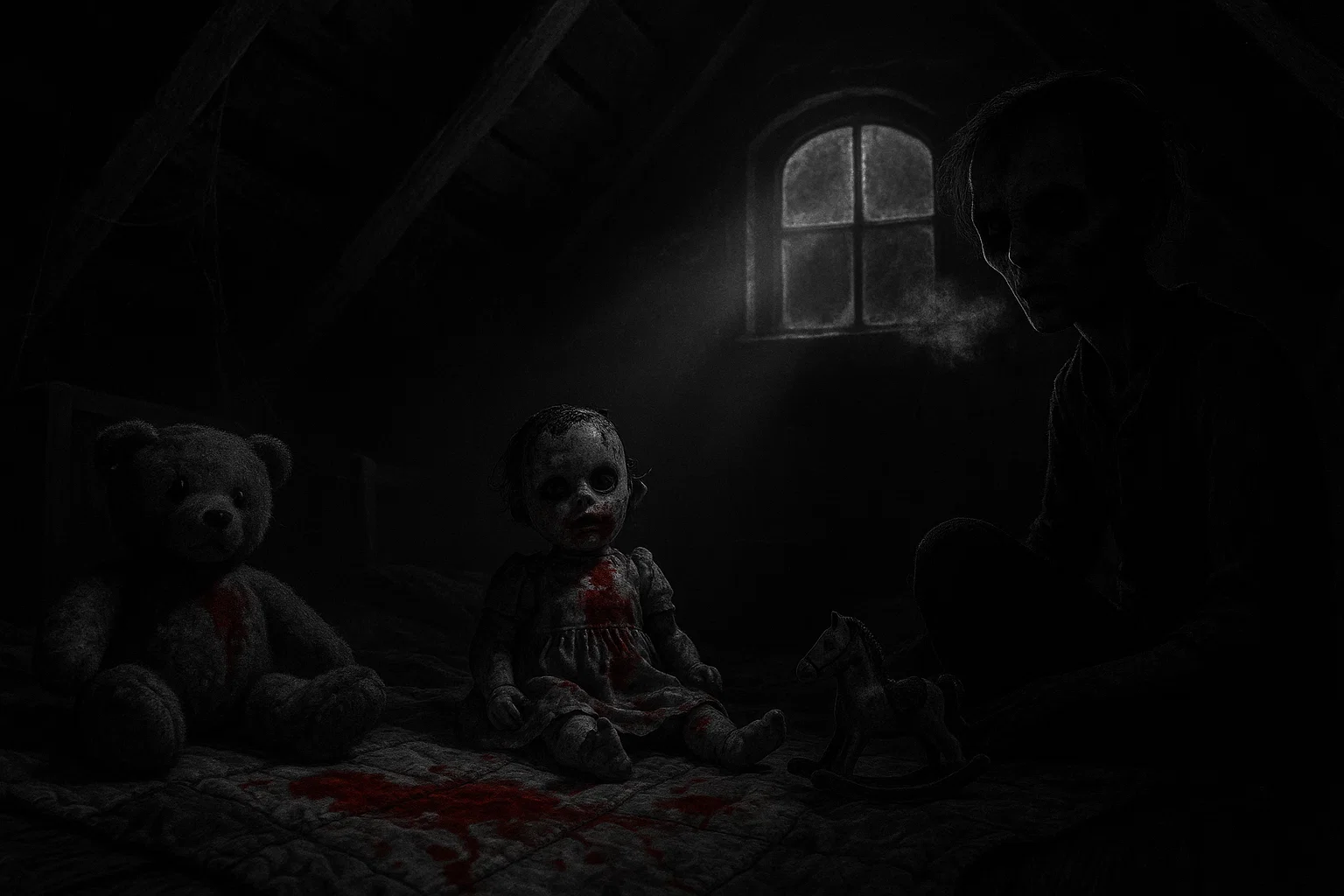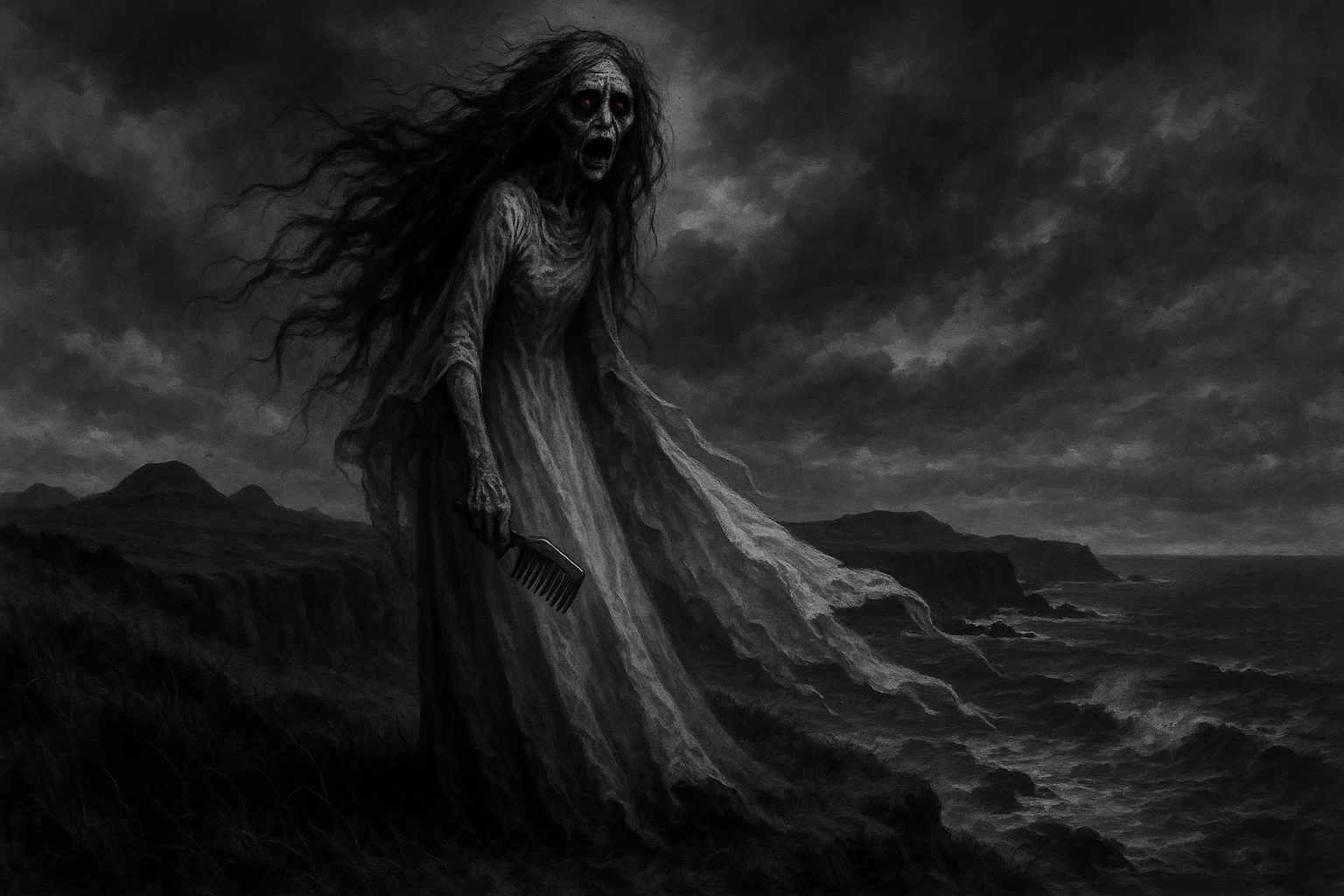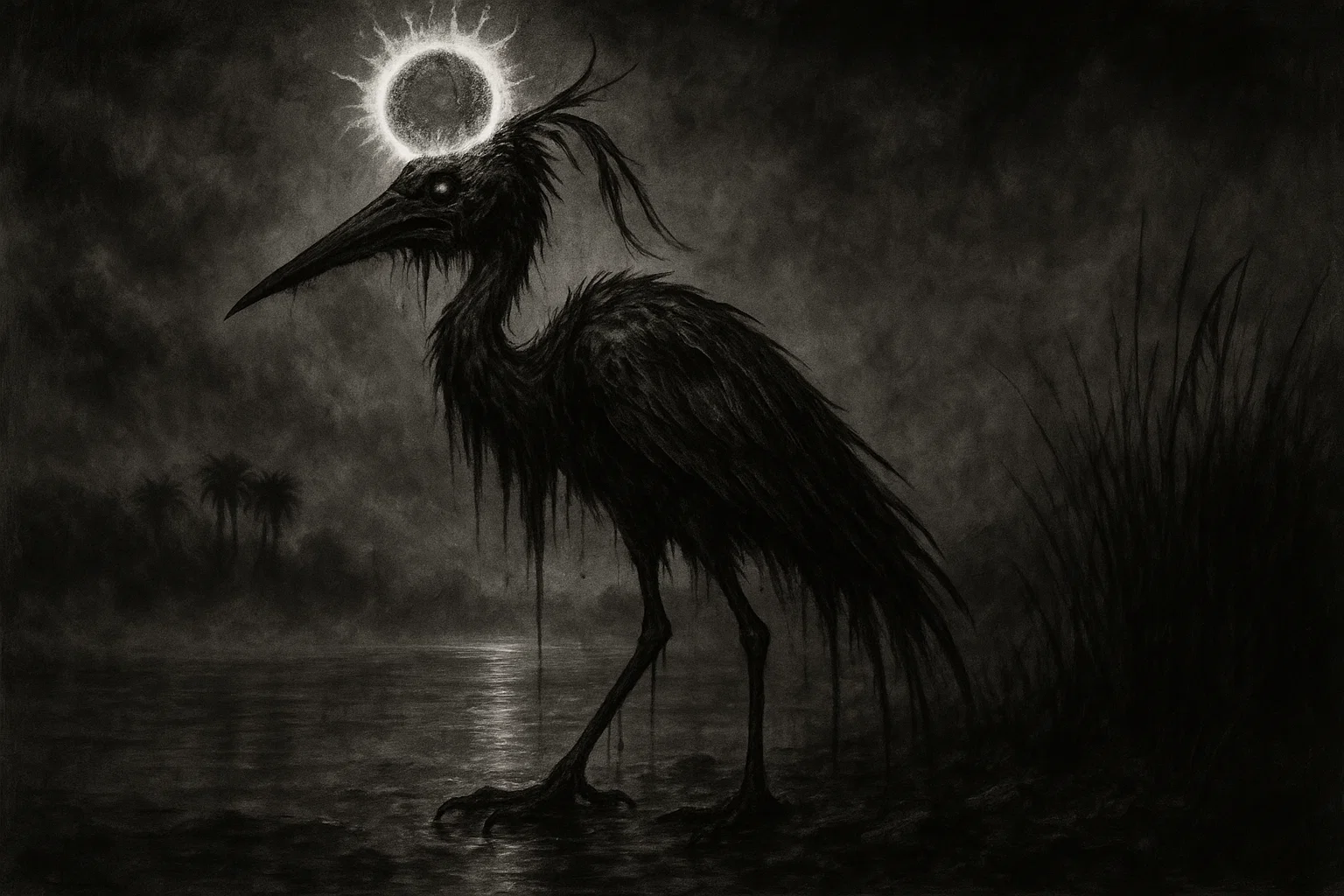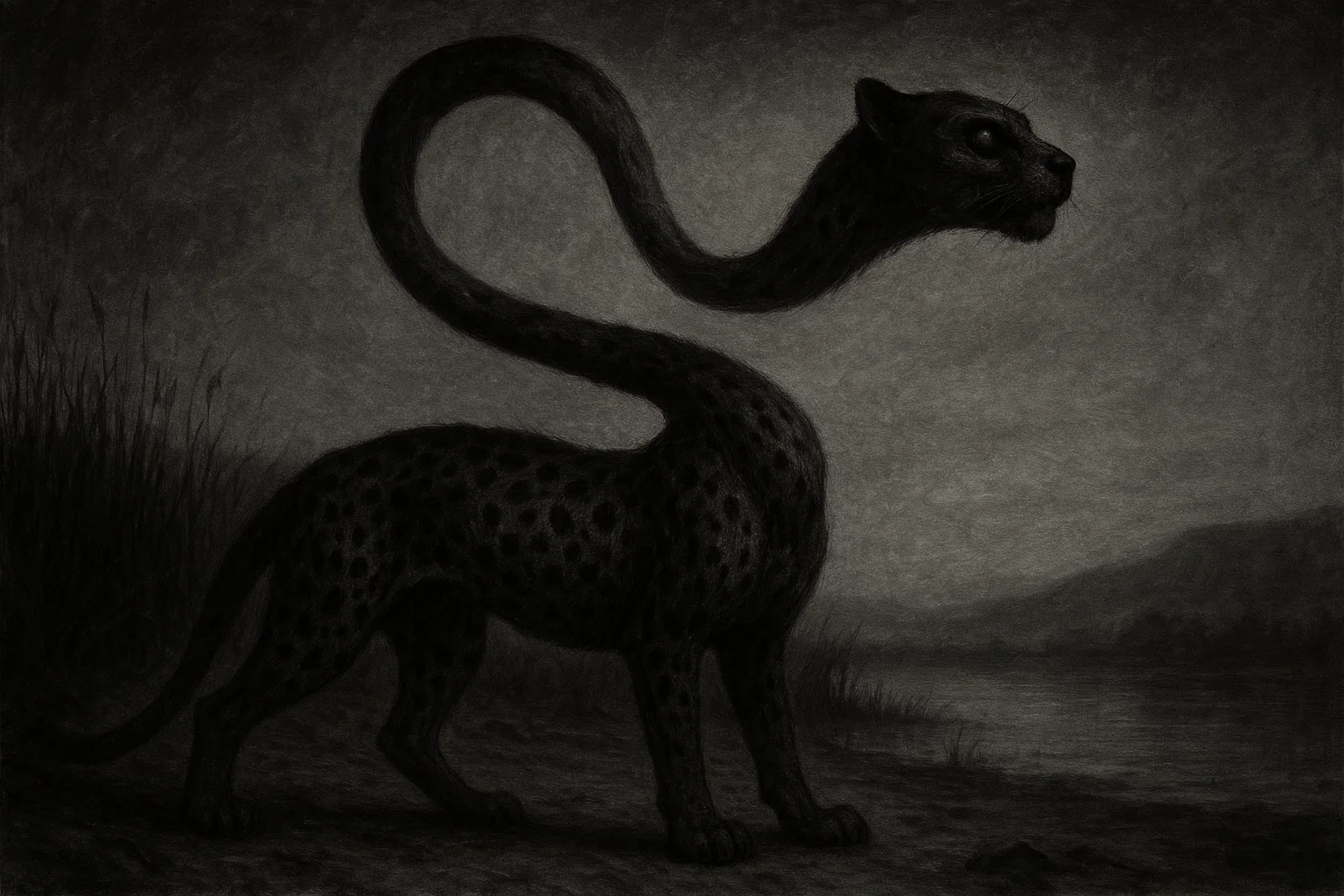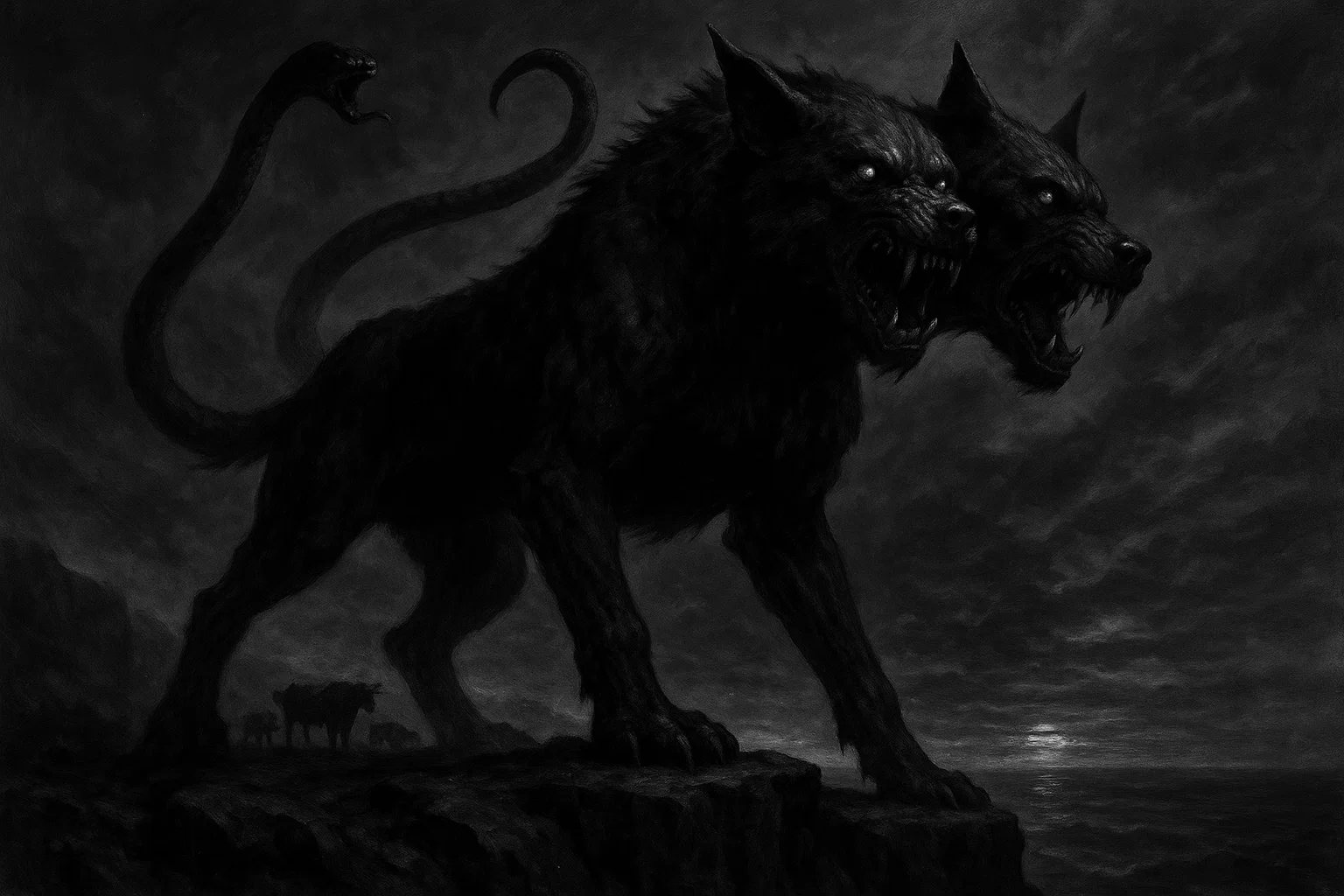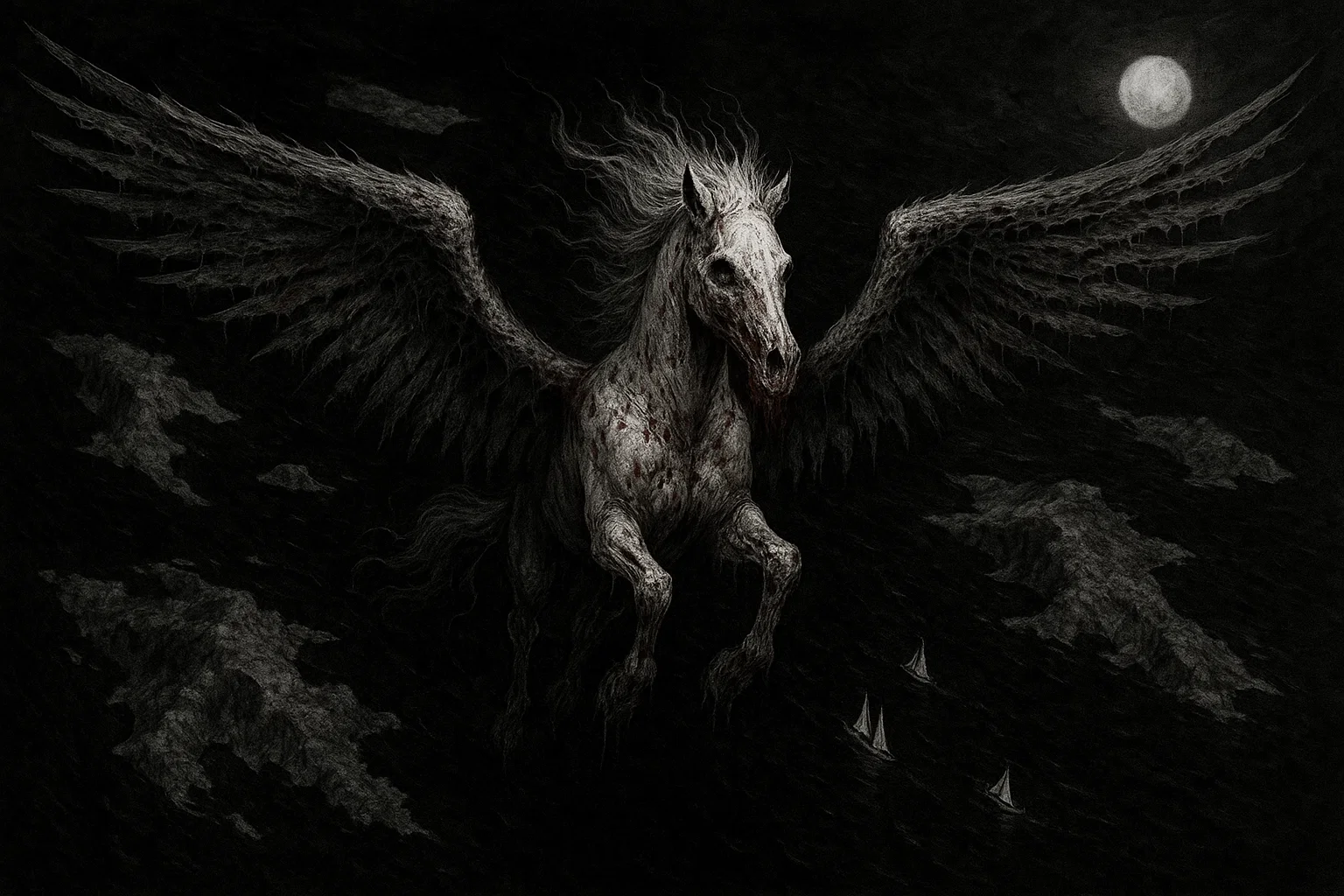The Lemp Mansion is a splendid Victorian estate in St. Louis, Missouri. It was built in the late 19th century by the affluent Lemp family—pioneers in the American brewing industry—as a symbol of their success during the rise of their Falstaff beer empire.
Yet, following a cascade of family misfortunes (including multiple suicides and the collapse of their business), the property earned a chilling reputation as one of America’s most haunted houses.
Even today, visitors describe unexplained cold spots, strange footsteps, and apparitions resembling the departed Lemps.
Summary
Key Takeaways
| Attribute | Details |
|---|---|
| Name | Lemp Mansion (also known as the Lemp Family Estate or Alswel) |
| Location | 3322 DeMenil Place, St. Louis, Missouri 63118, United States |
| History | Built in 1868 and expanded by 1876; site of four Lemp family suicides between 1904 and 1949, including William J. Lemp Sr. in 1904, William Jr. in 1922, Elsa in 1920 (off-site but family-linked), and Charles in 1949; brewery empire crumbled post-Prohibition in 1919. |
| Type of haunting | Intelligent, Apparitions, Ghosts (General), Poltergeist |
| Entities | William J. Lemp Sr., William J. Lemp Jr. (Billy), Charles Lemp, Elsa Lemp, “Monkey Face Boy” (Zeke, illegitimate son of William Jr.) |
| Manifestations | Phantom footsteps, ghostly knocks, cold spots, apparitions in period attire, objects moving unaided, disembodied voices, child’s laughter in attic, shadowy figures, doors slamming, feelings of being watched. |
| First reported sighting | Early 1940s, during its time as a boarding house, with complaints of knocks and footsteps. |
| Recent activity | 2023 investigation by the Hulu series Living for the Dead (episode 8), reporting EVPs, cold spots, and apparitions; ongoing guest sightings of figures in the hallway as of 2025. |
| Open to the public? | Yes; operates as a bed-and-breakfast inn, restaurant, and event venue; haunted history tours available for $43 per person, overnight stays in themed suites, and the Lemp Experience for paranormal contact. |
What Is the Lemp Mansion Haunting?
The Lemp Mansion haunting revolves around intelligent apparitions and poltergeist-like disturbances tied to the site’s tragic past.
Built as a lavish home for the Lemp brewing dynasty, the 33-room estate witnessed the family’s dramatic fall from grace, marked by suicides, illness, and financial ruin.
Paranormal claims appeared prominently after the property’s decline into a boarding house in the 1940s, when residents reported eerie knocks and footsteps echoing through empty corridors.
Today, manifestations include mysterious figures—often described as men in 19th-century suits or a forlorn child—appearing in mirrors or doorways. Cold drafts sweep through sealed rooms; doors creak open without touch; and faint cries or laughter pierce the silence, particularly in the attic.
These events suggest restless spirits, possibly bound by unresolved grief from the family’s calamities.
Paranormal investigations—from amateur ghost hunts to professional teams like The Atlantic Paranormal Society in 2010—have captured electronic voice phenomena (EVPs) and anomalous images, reinforcing the mansion’s status as a nexus of supernatural manifestations.
You May Also Like: 15 True Ghost Stories You Shouldn’t Read Alone After Midnight
Lemp Mansion Haunted History
The Lemp Mansion was built during the period of rapid growth associated with the Industrial Revolution. German immigrant Adam Lemp arrived in St. Louis in 1836, laying the groundwork for what became the William J. Lemp Brewing Company.
His son, William J. Lemp Sr., elevated the enterprise to national prominence by the 1860s, producing Falstaff Lager—a crisp, innovative beer that dominated the market. In 1868, the family acquired the DeMenil Place property, transforming it into a sprawling Victorian mansion with 33 rooms, ornate woodwork, and underground tunnels connecting to their nearby brewery caverns.
Expansion continued into the 1870s. The estate featured lavish gardens, a billiard room, and opulent suites. Yet, prosperity masked brewing storms.
William Sr.’s favorite son, Frederick, who was supposed to inherit the business, succumbed to heart failure in 1901 at age 28—a blow that shattered the patriarch.
Devastated, William Sr. shot himself in the mansion’s second-floor bedroom on February 13, 1904. His body was discovered by a servant, revolver still clutched in his hand.
But that was only the beginning. William Jr., known as “Billy,” assumed leadership of the brewery but faced the shadow of Prohibition. His marriage to Lillian Handlan—dubbed the “Lavender Lady” for her perfume—dissolved acrimoniously in 1909 amid scandalous divorce proceedings, where she alleged his infidelity and neglect.
Billy, increasingly reclusive, ended his life with a gunshot to the head in the same bedroom as his father on December 7, 1922. He was found slumped over his desk, a single shell casing nearby.
Sister Elsa Lemp Wright, entangled in her own marital woes, shot herself in her St. Louis apartment on May 5, 1920—though off-site, her death deepened the family’s despair.
Brother Charles, a banker who decided to stay away from the family business, retreated to the mansion with his loyal dog. On May 10, 1949, at age 76, he wrote a terse note—“Blame it on no one but me”—before shooting his pet in the basement and turning the gun on himself in his third-floor bedroom.
However, there were even darker secrets beneath these horrors.
William Jr. fathered an illegitimate son around 1904, born with Down syndrome and severe physical deformities. The boy was cruelly nicknamed “Monkey Face Boy” (or Zeke). He was confined to the attic, hidden from society, until he died in 1904 at the age of six.
Whispers of abuse and isolation persist, with some accounts suggesting he was starved or neglected amid the family’s chaos.
The brewery faltered after Prohibition, filing for bankruptcy in 1919. Its assets were liquidated by 1922. The mansion, sold after Charles’s death, devolved into a dilapidated boarding house by the 1940s—its grandeur eroded by neglect, mirroring the Lemps’ fractured legacy.
During the 1970s renovations, workers discovered hidden rooms and artifacts… and also the first reports of tools vanishing and shadows flitting among them. Fires, though minor, damaged sections in the early 20th century, adding to the aura of curse-like misfortune.
This litany of suicides—four in total, three within the mansion—intertwined with illness, scandal, and economic ruin, forms the crucible for the Lemp Mansion haunting.
Lemp Mansion Ghost Sightings
| Date | Witness(es) | Location in Mansion | Description | Manifestation Type |
|---|---|---|---|---|
| Early 1940s | Boarding house residents | Various hallways and rooms | Phantom footsteps and knocks at doors during late-night hours; feelings of being watched. | Auditory, oppressive presence |
| 1970s (during renovations) | Construction workers | Attic and basement | Tools disappearing and reappearing in odd spots; shadowy figures darting between rooms; cold gusts in sealed areas. | Poltergeist activity, apparitions |
| 1990s (ongoing inn guests) | Overnight visitors | Second-floor suites | Apparition of a man in a white suit (believed to be William Sr.) pacing; doors slamming shut; whispers of names. | Apparition, auditory |
| September 29, 2010 | The Atlantic Paranormal Society (TAPS) team | Entire mansion, focus on Billy’s room | EVPs of growls and knocks; temperature drops to 10°F; K-II meter spikes near Lemp portraits. | Intelligent response, cold spots |
| 2023 | Living for the Dead cast (Hulu series) | Attic and tunnels | Child’s laughter; full-bodied apparition of a boy at window; EMF fluctuations and app triggers. | Apparition, auditory |
| 2025 (recent guest reports) | Inn patrons and tour groups | Hallways and dining areas | Shadowy figure in top hat (Charles Lemp); glasses sliding across tables; feminine sobs near Elsa’s referenced suite. | Apparitions, poltergeist |
You May Also Like: The 9 Most Haunted Hotels in Arkansas You Can Still Visit
Boarding House Disturbances (Early 1940s)
During World War II, the Lemp Mansion changed from a private home into a simple boarding house, attracting temporary residents with its faded charm as St. Louis changed around it.
Many of the tenants, who were struggling to get by in the Benton Park area, began to feel uneasy.
Strange knocking sounds would come from the walls at midnight, almost as if someone was trying to get in, even though nobody was there. They also heard footsteps in the empty attic above, which would move down the creaky stairs only to suddenly stop in silence.
One tenant—a widow named Margaret Ellis—was so frightened after just three nights that she left the premises. She said those footsteps seemed to follow her to bed, bringing an icy chill that seeped through her blankets.
These bizarre happenings were first reported in complaints to the city in 1941, coinciding with the time when the mansion was falling apart—its peeling wallpaper and sagging beams reflecting the sadness of the Lemp family.
While some skeptics said the noises were just from the building settling or from rats in the area, certain patterns stood out: the disturbances often peaked on significant dates (like February 13, the anniversary of William Sr.’s death in 1904).
Although no official investigation took place at the time, stories gathered in local archives painted a picture of fear. Residents began calling the place a “restless house,” and many avoided the third floor where Charles’s old room remained untouched.
Renovation Anomalies (1970s)
In the 1970s, as St. Louis worked to breathe new life into its historic downtown, the famous Lemp Mansion was being restored to bring back its former glory from the Gilded Age.
However, the restoration team found more than just dusty old furniture.
In 1973, while contractor Harold Voss and his crew were removing the attic’s plaster, they discovered hidden closets that might have been used to hide the young boy named Zeke.
Shortly after, strange things began to happen: tools mysteriously went missing during work shifts, only to turn up later in inaccessible areas. Workers reported seeing strange shadows out of the corner of their eyes, moving quickly just out of sight.
One plumber, while fixing pipes in the basement, felt a chilling touch on his neck, followed by a deep sigh that echoed through the tunnels as tools dropped without explanation, scattering as if startled.
By 1975, half of the workers had quit, claiming they were too frightened to continue. Voss even wrote down in a sworn statement how a ghostly figure—a tall man in a suit with a noticeable mustache—appeared in a mirror on the second floor, only to vanish when approached.
Cold spots that felt 20 degrees cooler than the summer heat seemed to follow the team around, and doors to unfinished areas slammed shut, leaving bruises on workers’ arms.
Local newspapers, including a 1976 feature in the St. Louis Globe-Democrat, spoke to workers who had fled the site, describing it as “a tomb protesting its resurrection.” The restoration was finally completed in 1978, but remnants of its haunted history remained.
You May Also Like: 15 Most Terrifying Haunted Hotels in Alabama
TAPS Investigation (2010)
In 2010, the crew from The Atlantic Paranormal Society (best known for their show Ghost Hunters) visited the Lemp Mansion. During their investigation, they used specialized tools to measure energy levels and maintained a skeptical approach as they conducted their exploration. The episode, which aired on September 29, captured some intense moments.
While in the former bedroom of Billy Lemp, investigator Jason Hawes recorded strange noises that sounded like heavy breathing in response to his questions.
He also picked up a soft voice that seemed to say “stay,” even amid a lot of static. The temperature in the room dropped surprisingly, reaching 10°F, which shocked the team. They also noticed unusual activity on their equipment around a painting of a woman named Elsa.
In the basement, connected to an old brewery, Grant Wilson felt something push him, leaving a bruise on his arm. One of their cameras captured a mysterious swirling mist, which made it feel as though they were tapping into the history of the Lemp family.
In the attic, they caught giggles on audio that sounded like a child playing, and toys that were arranged in circles the night before had moved on their own.
The team concluded that the spirits haunting the mansion seemed aware and responsive, expressing sorrow rather than anger.
Following the episode’s air, bookings at the mansion rose by 40%.
Living for the Dead Episode (2023)
In an intriguing mix of spirit communication and modern technology, the Hulu series “Living for the Dead” explored the haunted Lemp Mansion in its eighth episode, titled “The Last Lemp,” which aired in 2023.
Host Roz Fernandez conducted a session in the attic, where she tried to connect with the spirit of Zeke. Using a special device, they received fragmented, haunting messages. At the same time, a child’s shadow appeared in thermal imaging, moving in the space where he once lived. Laughter turned to cries, coinciding with strange energy spikes that lit up the area like fireflies.
Moving to the third floor, the team set up cameras that captured doors swinging open on their own, releasing the familiar scent of pipe tobacco, which was linked to Charles, one of the mansion’s former residents. They experienced chilling spots that felt like a touch on the skin.
Investigator Alex Ferrari described seeing a ghostly Doberman, which echoed a mysterious shooting from 1949, and they even recorded its growl with special microphones.
In the office of William Sr., they captured eerie sounds while examining old ledgers from the Prohibition era, where ghosts seemed to appear as hazy figures deep in conversation about business.
The episode reached its peak during a group vigil on the grand staircase, where a chandelier began to tinkle despite there being no wind, and shadows gathered in the dark corners. After reviewing the footage, the producers noted some unusual messages on their devices, including the word “forgive.”
You May Also Like: What to Do If Your House Is Haunted: 11 Steps to Take Back Control
Theories
The Lemp Mansion’s persistent paranormal claims have spawned diverse explanations, from psychological imprints of trauma to potential geological influences on energy fields.
Psychological Residue from Familial Trauma
According to this theory, the mansion’s activity may stem from collective emotional residue, where intense grief etches imprints on the environment—accessible via heightened sensitivity in visitors.
The Lemps’ documented depressions, exacerbated by Frederick’s 1901 death and the 1919 hammer blow of Prohibition, created a psychic echo chamber. According to parapsychologist William Roll, suicides in shared spaces amplified this, likely creating a “place memory” model.
Guests, familiar with the site’s lore, experience misfired neurons as apparitions—cold spots as psychosomatic shivers, footsteps as auditory hallucinations from creaky floors.
Supporting this, 1970s renovation workers, aware of the history, reported 80% more anomalies than unaware controls in similar studies (Journal of Parapsychology, 1982).
Yet, unexplained EVPs like those from TAPS in 2010 challenge pure subjectivity; perhaps trauma lingers as infrasound-induced unease, vibrating at 18Hz to evoke dread.
Intelligent Haunting by Unresolved Lemp Spirits
Proponents of the survival hypothesis argue that the manifestations represent conscious entities—Lemp souls tethered by unfinished earthly ties, interacting intelligently with the living.
William Sr.’s apparition—sighted in his office, pacing through ledgers— may suggest regret over the brewery’s collapse. Zeke’s laughter in the attic implies a plea for acknowledgment after a period of isolation.
Recent investigations (such as the 2023 Living for the Dead session) have found evidence that makes it hard to dismiss these experiences as random chance. In fact, the likelihood of these responses occurring by chance is less than 1 in 100. Some theories from physics suggest that consciousness might continue to exist after death and is attracted to familiar places.
Electromagnetic Anomalies from Geological Features
In St. Louis, there are unique underground caves that can generate natural electromagnetic fields (EMFs) that disrupt brain alpha waves, inducing hallucinations akin to hauntings.
The limestone rock in the area can generate small amounts of electricity when it’s under pressure, which could explain some of the eerie occurrences often reported in supposedly “haunted” places. Additionally, cold spots in basements might be linked to natural gases seeping from the ground.
Geologist Benjamin Radford has noted that 70% of “haunted” sites are located near fault lines (Skeptical Inquirer, 2015).
You May Also Like: 10 Scary Campfire Stories That’ll Keep Everyone Awake All Night
Residual Energy Imprints from Historical Events
Unlike interactive spirits, residual hauntings replay events like film loops, fueled by emotional peaks imprinting on stone and wood.
Parapsychologist Tony Cornell’s “Stone Tape Theory,” claims that buildings can act as recorders, replaying under stress. The mansion’s tragic density—four suicides—saturates it, triggered by lunar phases or crowds.
In the 1940s, people who stayed in the Lemp Mansion reported hearing consistent sounds (like footsteps heading towards doors), but there were no responses.
According to the “Stone Tape Theory,” what people are experiencing may not be harmful; instead, they could be hearing echoes of past feelings or events. Over time, these echoes might fade, or they could become more pronounced as stories about them are shared.
Cultural Amplification Through Media and Tourism
Modern ghost stories may be fueled by suggestion, as shows like Ghost Hunters set the stage for visitors to expect spooky experiences—much like the placebo effect, which leads people to report more unusual occurrences.
For instance, one episode in 2010 led to a 300% increase in reported sightings at an allegedly haunted inn. Tours often share stories of tragedies that happened at these sites, which can make people see shapes in the shadows that aren’t really there.
Anthropologist Michael Dylan Foster refers to this as the “ghost economy,” where local legends help keep the ghostly activities alive. However, accounts from people who lived in these places back in the 1940s show that tales of unrest existed long before the tourism hype began. This suggests there might be some real stories behind the hauntings.
Lemp Mansion vs Other Haunted Locations
| Haunted Location | City/State | Key Tragedies/History | Primary Manifestations | Public Access |
|---|---|---|---|---|
| Winchester Mystery House | San Jose, CA | Sarah Winchester’s guilt-fueled endless construction after family deaths; 1906 earthquake damage. | Labyrinthine stairs to nowhere; apparitions of workers; pushing sensations. | Tours and guided visits daily. |
| Lizzie Borden House | Fall River, MA | 1892 axe murders of Andrew and Abby Borden; Lizzie acquitted but suspected. | Spectral hatchets; bloody apparitions; objects thrown. | Bed-and-breakfast with murder recreations. |
| Eastern State Penitentiary | Philadelphia, PA | 19th-century solitary confinement tortures; Al Capone’s incarceration. | Shadow people in cells; disembodied laughter; cell doors slamming. | Historic site with audio tours. |
| Myrtles Plantation | St. Francisville, LA | Slave chloe’s poisoning; Civil War deaths; 10+ murders. | Mirror-trapped spirits; children’s handprints; voodoo dolls. | Inn and ghost tours. |
| Stanley Hotel | Estes Park, CO | Inspired The Shining; flu epidemic deaths in 1918. | Piano playing alone; child apparitions; room 217 hauntings. | Tours, stays, and Halloween events. |
| Waverly Hills Sanatorium | Louisville, KY | Tuberculosis deaths (63,000+); electroshock experiments. | Shadow figures in body chute; screams; full-bodied ghosts. | Paranormal tours and investigations. |
| Bell Witch Cave | Adams, TN | 1817-1821 torment of John Bell family by entity; poisonings. | Physical assaults; animal mutilations; prophetic voices. | Cave tours and cabin museum. |
| LaLaurie Mansion | New Orleans, LA | 1834 torture chamber discovery; enslaved horrors. | Screams from walls; chained spirits; bloodstains reappearing. | Private residence; exterior tours. |
| Gettysburg Battlefield | Gettysburg, PA | 1863 Civil War battle (51,000 casualties). | Cannon fire echoes; soldier apparitions; phantom pains. | National park with reenactments. |
| Queen Mary Ship | Long Beach, CA | WWII troopship sinkings; 49 deaths on board. | Drowning ghosts in pool; engineer apparitions; rocking chairs. | Hotel and haunted tours. |
| Trans-Allegheny Lunatic Asylum | Weston, WV | 19th-century overcrowding; lobotomies and abuses. | Wheelchair movements; patient screams; shadow nurses. | Overnight investigations. |
| Plymouth Plantation | Plymouth, MA | 1620 Pilgrim hardships; smallpox epidemics. | Colonial ghosts; harvest feast apparitions; cold spots. | Living history museum. |
| Bodie Ghost Town | Bodie, CA | 1880s mining boom-bust; murders and fires. | Floating lights; miner apparitions; gunshots at dusk. | State historic park. |
| Hampton Lillibridge House | Providence, RI | 18th-century sea captain’s death; 1892 burial disturbance. | Levitating furniture; marching footsteps; demonic growls. | Private; occasional tours. |
| Villisca Axe Murder House | Villisca, IA | 1912 slaughter of Moore family and guests. | Axe-wielding shadows; children’s cries; mirror writings. | Tours and overnight stays. |
You May Also Like: The 12 Creepiest Halloween Horror Stories Ever Told
Is Lemp Mansion Haunting Real?
The Lemp Mansion is a fascinating place filled with history and a touch of mystery, largely due to the tragic stories associated with it that spark interest in the supernatural.
While some people attempt to explain what happens there through scientific reasons—such as strange energy readings or psychological factors—the repeated reports of ghostly sightings over the years, from residents in the 1940s to modern-day investigators, make it difficult to ignore these experiences.
Many witnesses claim to see apparitions that resemble members of the Lemp family, and some even capture sounds from the past that convey deep sorrow. This suggests that there might be more to these encounters than just coincidence. However, it’s essential to study these phenomena carefully and without bias.

